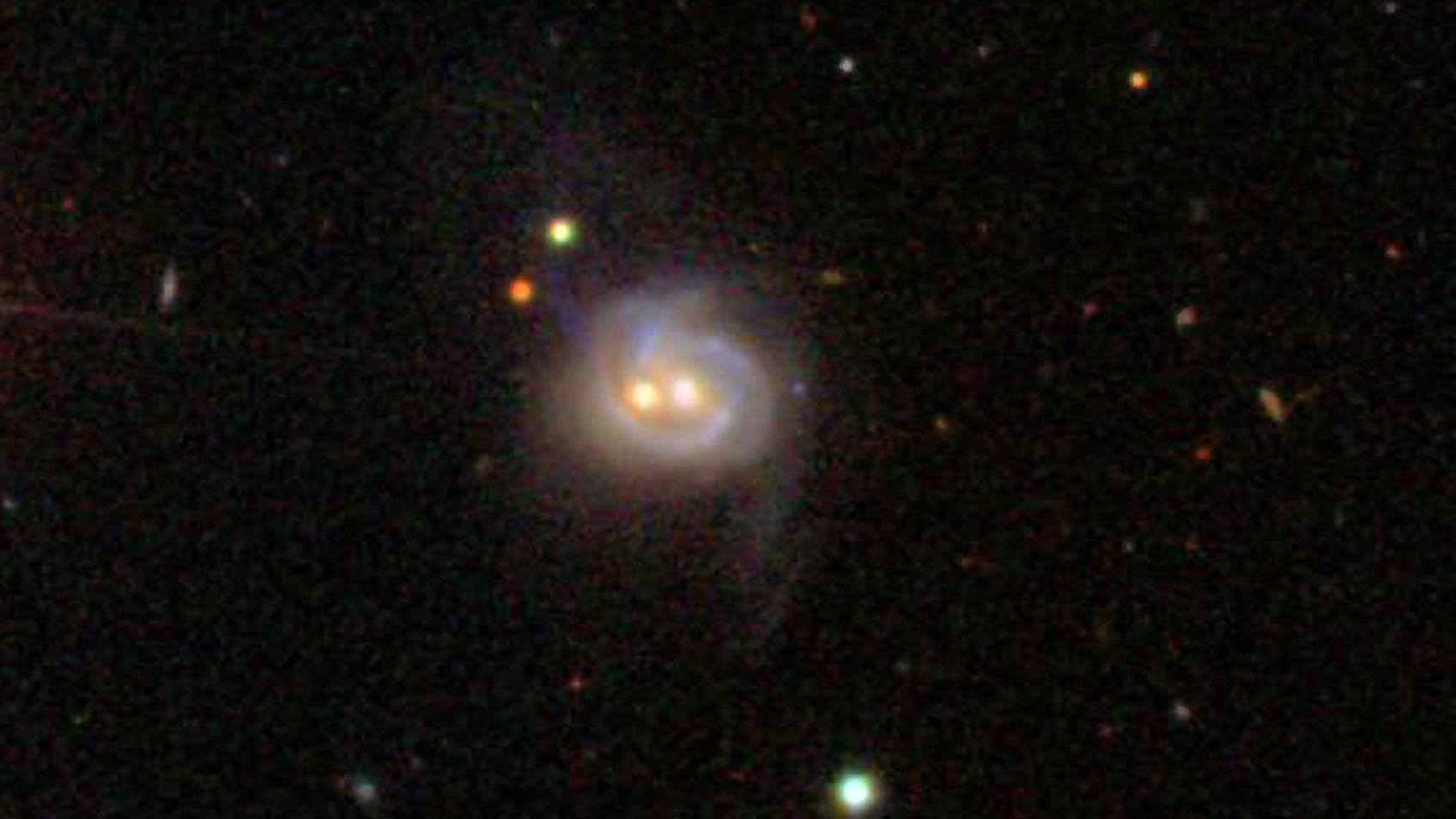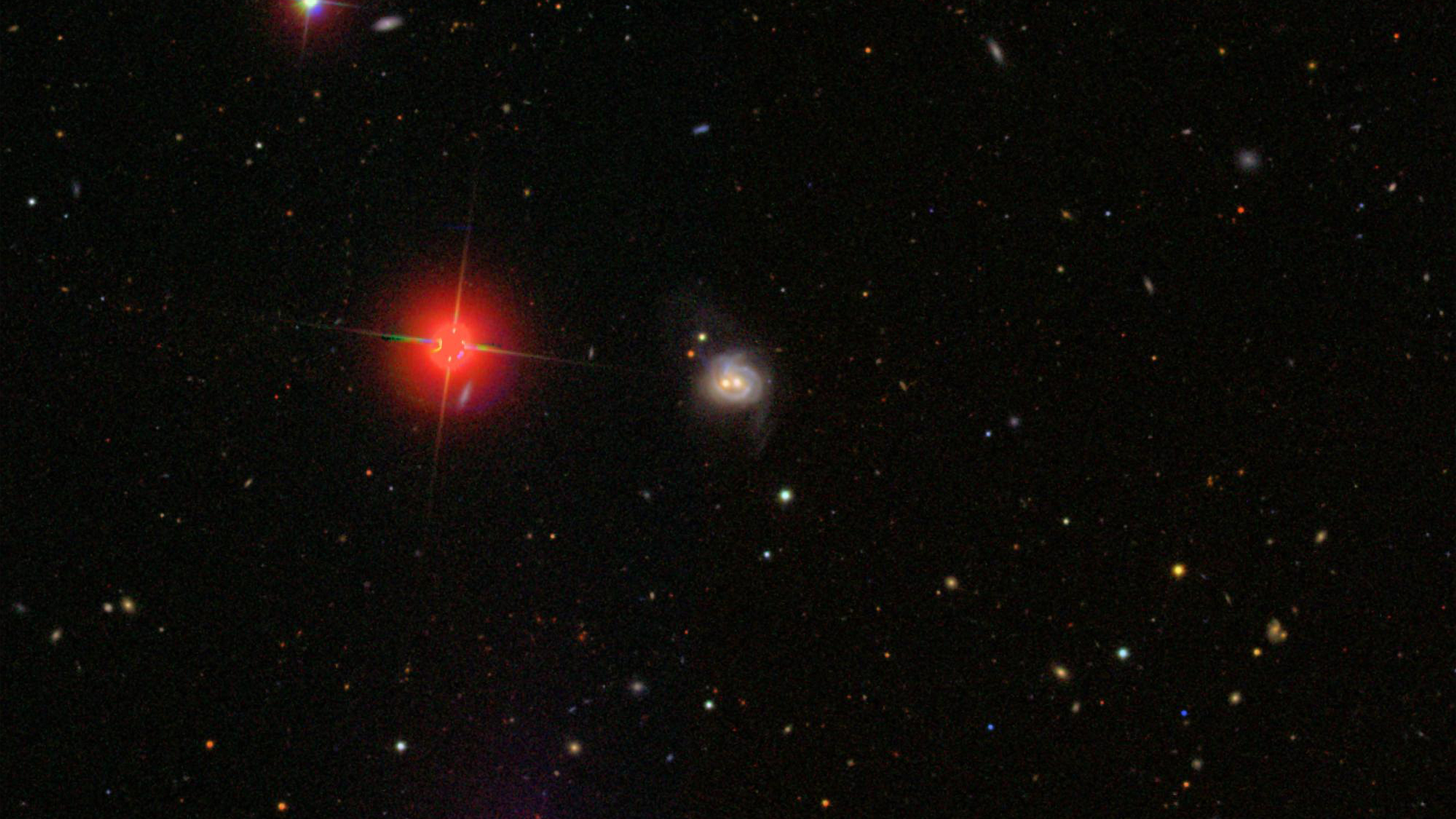Nearby Galaxy Boasts Two Monster Black Holes, Both Active
The galaxy, which is known as Markarian 739 or NGC 3758, lies 425 million light-years away toward the constellation Leo. Only about 11,000 light-years separate the two cores, each of which contains a black hole gorging on infalling gas.
Astronomers refer to galaxy centers exhibiting such intense emission as active galactic nuclei (AGN). Yet as common as monster black holes are, only about one percent of them are currently powerful AGN. Binary AGN are rarer still: Markarian 739 is only the second identified within half a billion light-years.
Many scientists think that disruptive events like galaxy collisions trigger AGN to switch on by sending large amounts of gas toward the black hole. As the gas spirals inward, it becomes extremely hot and radiates huge amounts of energy.


Credits
Chris Smith (HTSI): Animator
Scott Wiessinger (USRA): Producer
Francis Reddy (SPSYS): Writer
NASA/Goddard Space Flight Center
https://svs.gsfc.nasa.gov/10795
Mission:
Swift
Data Used: Note: While we identify the data sets used in these visualizations, we do not store any further details nor the data sets themselves on our site.
This item is part of these series:
Astrophysics Animations
Astrophysics Stills
Goddard TV Tape:
G2010-139 -- Various Small Astrophysics projects
Keywords:
SVS >> Galaxy
SVS >> HDTV
SVS >> X-ray
SVS >> Black Hole
SVS >> Active Galaxy
SVS >> Astrophysics
SVS >> Swift
SVS >> Active Galactic Nucleus
NASA Science >> Universe











